Tom's Hardware Verdict
The Crucial T510 is a fast, budget-friendly PCIe 5.0 SSD with reasonable power efficiency and consistent sustained performance.
Pros
- +
Good all-around performance
- +
Excellent sustained performance
- +
Satisfactory power efficiency
Cons
- -
Limited capacities
Why you can trust Tom's Hardware
The P510 is Crucial’s answer to the budget PCIe 5.0 SSD market, which in and of itself is a strange and still-niche category. The drive seeks to neatly fill the gap between the P310 and the new T710, but it’s hard not to think of the T500 and T705 instead. This is a challenging task in its own right, but the P510 manages to stand out on its own and bring unique elements to the table. Whether this truly sets it apart remains to be seen.
On paper, the P510 should be a good all-around SSD that’s usable in laptops and other PCs without too much trouble. It’s best used in a 5.0 slot, but it would be fine in a PCIe 4.0 slot. This means it butts up against the best PCIe 4.0 SSDs which in some cases it can outperform and its four-channel, DRAM-less nature mean it’s more efficient, too. On the other hand, it can’t reach the heights of the very fastest drives, but it doesn’t have to with its lower pricing. That pricing is still higher than budget PCIe 4.0 drives which can get the job done, though. A problem is thus created, as to whom exactly is this drive for with such a relatively niche solution?
The P510 has some peculiarities which, for the most part, don’t help answer this question. However, one of them does. The P510 has a small cache but, as a result, delivers extremely consistent sustained write performance. With its high steady state speed, this drive could therefore be useful for certain applications. This resolves the primary issue we had with the T500 as well. That drive’s inconsistent sustained write performance after the cache was saturated was an Achilles' Heel. In general, this had no impact on the average user’s experience, and likewise, the P510 is a solid drive, regardless of its nuances. In totality, given the alternatives, this does mean it has to compete on price, but it may also have a place in certain builds aside from the normal drive-buying calculus.
Crucial P510 Specifications
Product | 1TB | 2TB |
|---|---|---|
Pricing | $99.99 | $179.99 |
Form Factor | M.2 2280 | M.2 2280 |
Interface / Protocol | PCIe 5.0 x4 NVMe 2.0 | PCIe 5.0 x4 NVMe 2.0 |
Controller | Phison E31T | Phison E31T |
DRAM | N/A (HMB) | N/A (HMB) |
Flash Memory | Micron 276-Layer TLC | Micron 276-Layer TLC |
Sequential Read | 11,000 MB/s | 10,000 MB/s |
Sequential Write | 9,500 MB/s | 8,700 MB/s |
Random Read (IOPS) | 1,500K | 1,500K |
Random Write (IOPS) | 1,500K | 1,500K |
Security | N/A | N/A |
Endurance (TBW) | 600TB | 1,200TB |
Part Number | CT1000P510SSD8-01 | CT2000P510SSD8-01 |
Warranty | 5-Year | 5-Year |
Crucial has the P510 at 1TB and 2TB, the two most popular capacities. Starting prices are at $99.99 and $179.99, which are competitive with the prices on drives like the PNY CS2150, the Addlink G55, and the more expensive Corsair MP700 Elite. Sequential performance for the drive can reach up to 11,000 / 9,500 MB/s for reads and writes, and random performance up to 1,500K / 1,500K read and write IOPS. One thing that stands out is that the 2TB SKU, as documented, is slower than the 1TB, which is unusual. It’s possible Crucial swapped the SKUs by accident, but we have an alternate theory that we will explore throughout the review.
Crucial backs the P510 with a standard five-year, 600TB of writes-per-TB of capacity warranty.
Crucial P510 Software and Accessories
Crucial has a two-pronged approach to software support, similar to WD and Samsung, by offering an SSD toolbox as well as cloning software. The toolbox is known as the Crucial Storage Executive, and it offers typical information and features that would be expected. This means health and SMART information, firmware update checking, and more, so it's more or less on par with the competition.
The P510 also supports Crucial’s OEM version of Acronis True Image for cloning, backup, and imaging, which is used for drive installation or upgrading. This matches what other manufacturers provide, even though there are good free options available.
Crucial P510: A Closer Look
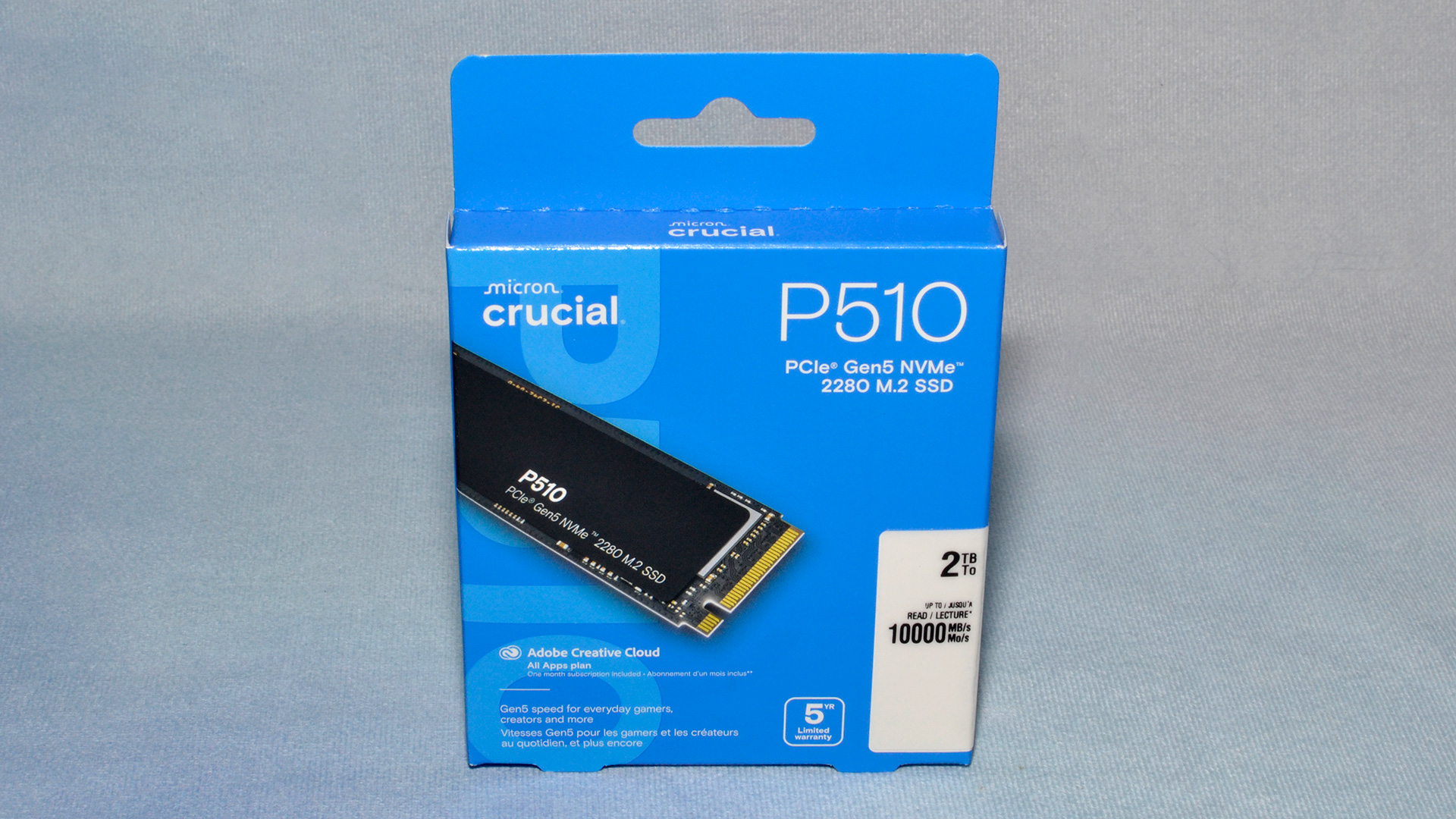
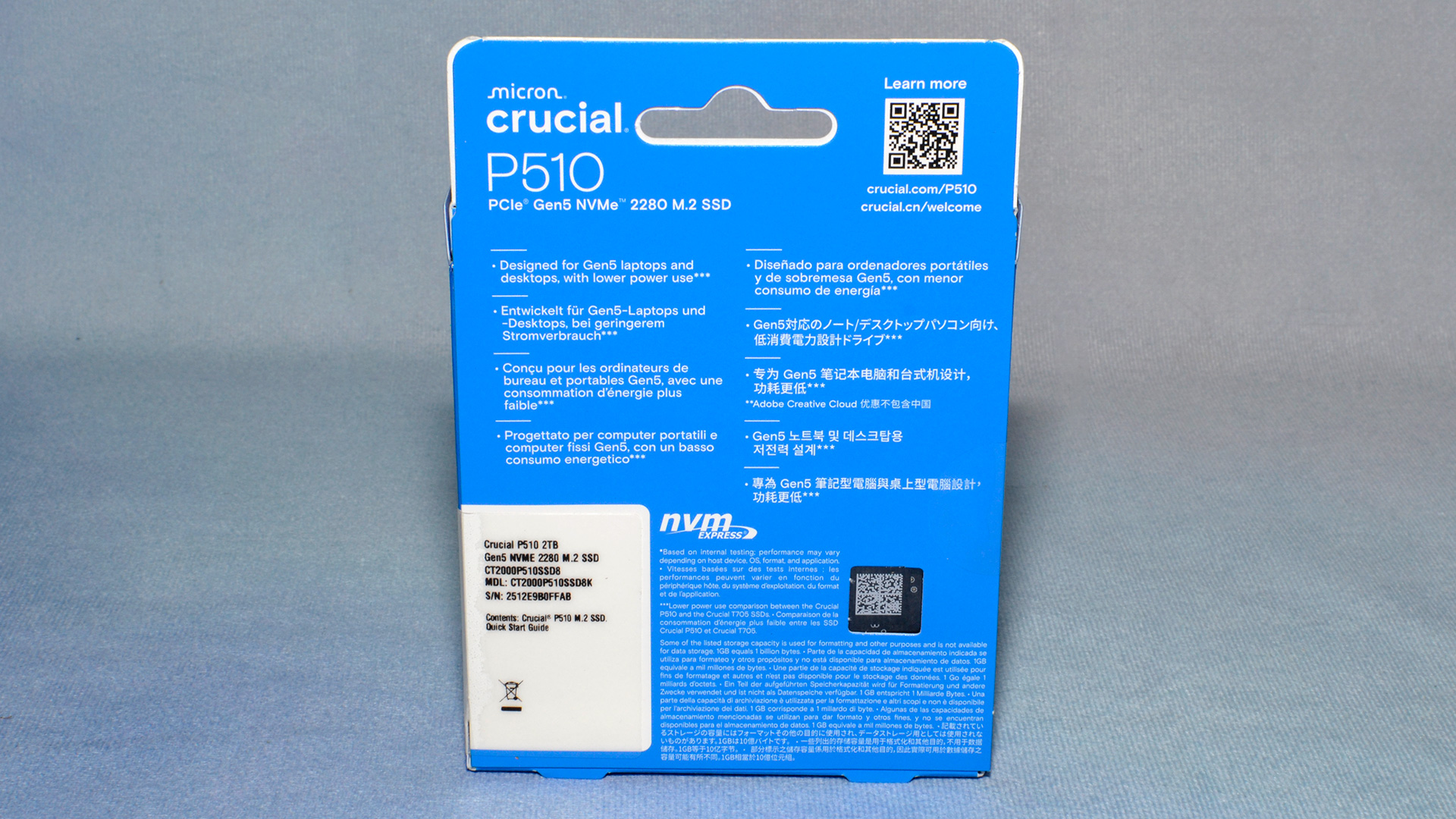
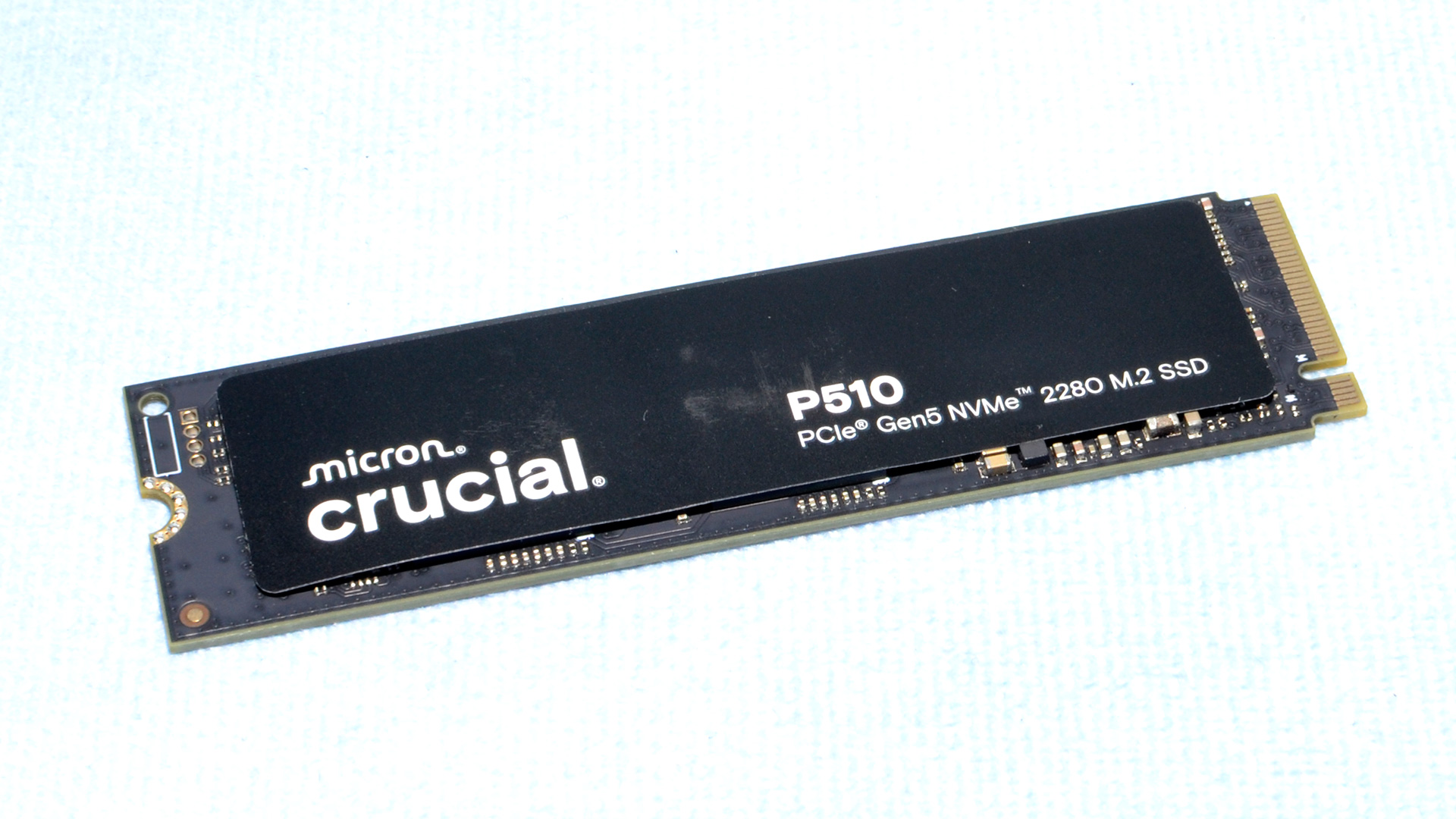
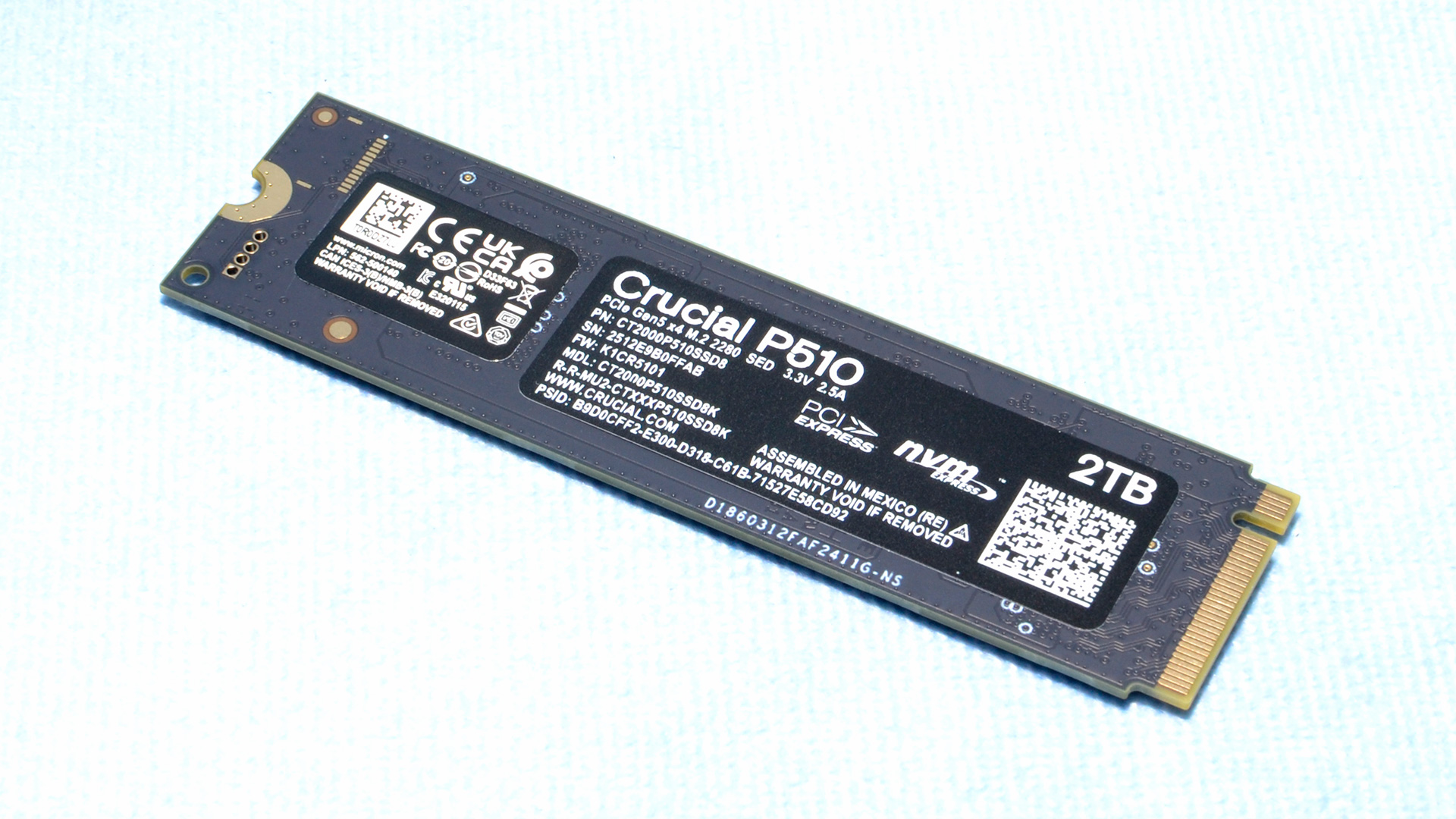
The 2TB P510 is single-sided, which is nice because it makes it even more comfortable in a laptop. If your laptop only has PCIe 4.0 or only two lanes of PCIe 5.0, this drive is still not a bad choice. It’ll still be very fast and power-efficient, although given the price premium, we would recommend the Sandisk WD Black SN7100 for a PCIe 4.0 machine instead, or the Samsung 990 EVO Plus if, for some reason, you are limited to two lanes of 5.0.
Get Tom's Hardware's best news and in-depth reviews, straight to your inbox.
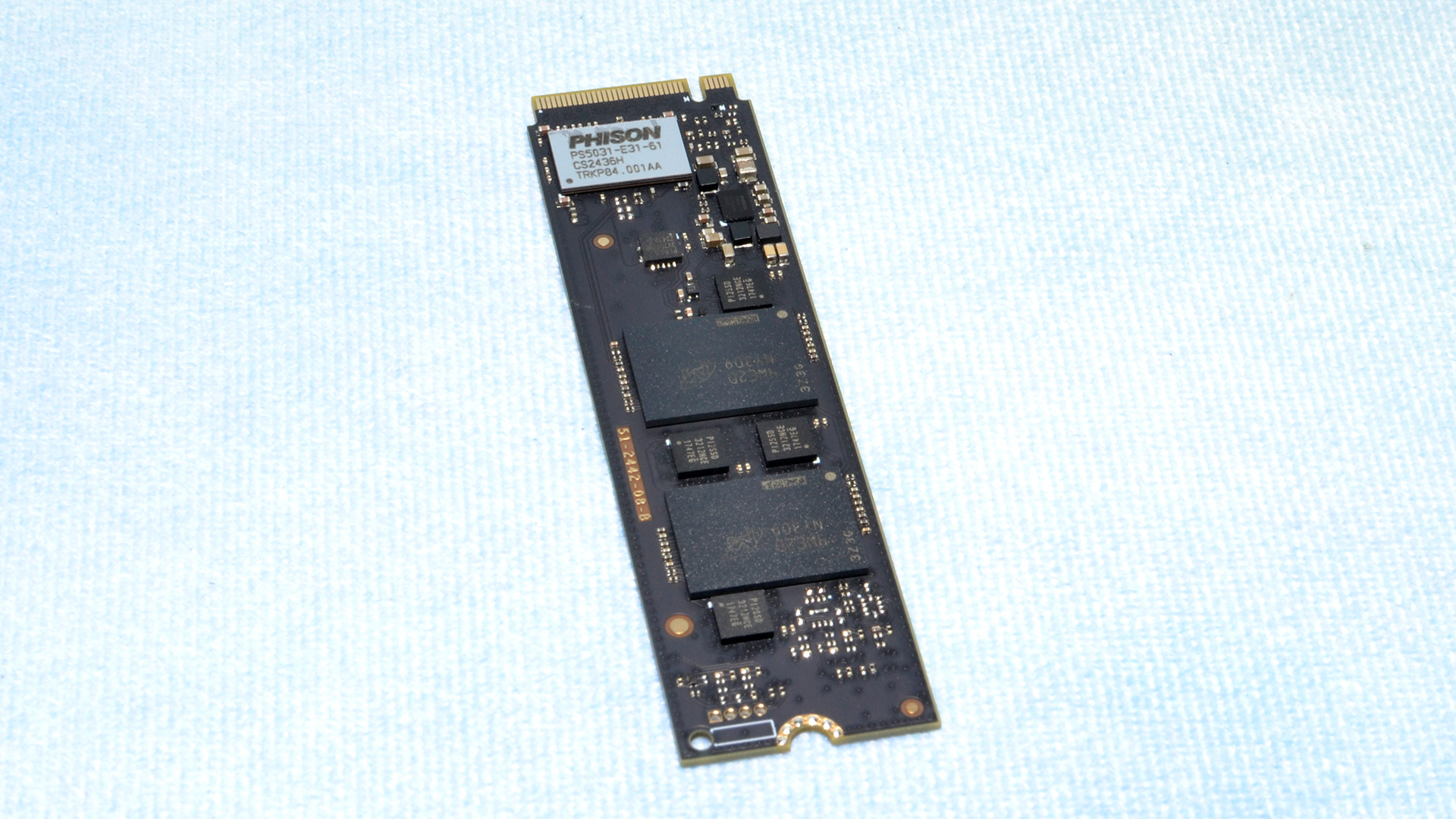
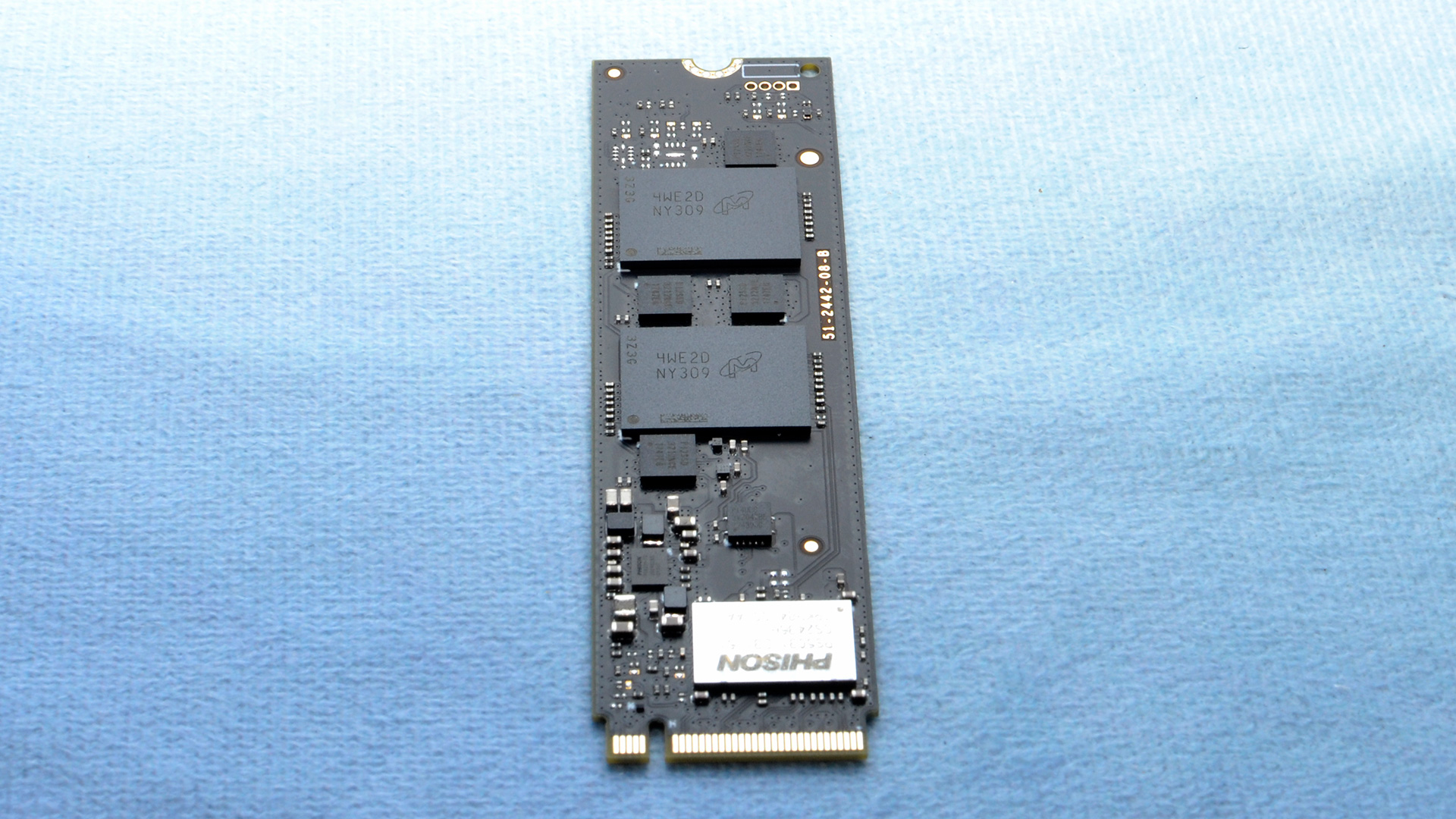
Here, we have the primary components of the SSD: an SSD controller, two NAND flash packages, and a power management integrated circuit (PMIC). The drive is DRAM-less, so it does not have any DRAM. The controller we already know well, covered in our preview and in reviews of similar drives, which we’ve listed in the Specifications section above. This is a fast yet low-power controller with just four channels, capable of reaching relatively high speeds thanks to a bus capable of 3,600 MT/s. It slots a little awkwardly along the original Phison E26 drives, which are definitely not power-efficient but do have more horsepower and DRAM. That leaves the P510 as a “budget” PCIe 5.0 SSD, which remains somewhat niche.
The big change here is with the flash. The other drives we’ve tested have all used Kioxia’s 218-Layer TLC (BiCS8) while Crucial opts to use its own Micron flash. In this case, the FBGA code “NY309” tells us it’s Micron’s 276-Layer TLC flash.
As such, before we even look at the benchmarks, we have some idea of how this will shake out. The Micron 4600, which uses the SMI SM2508 controller but with the same flash, shook out to be significantly less power-efficient than that same controller paired with BiCS8 in the WD Black SN8100. So, we expect to see the same thing here.
It’s possible this flash will have other effects on performance, too, as it uses a six-plane design in comparison to BiCS8’s four-plane arrangement. This can mean more bandwidth for Micron flash, but it may not have the best latency. With the case of the drive’s lineup starting with a 1TB SKU, too, it’s probably not an issue to max out the controller’s bandwidth already, which makes the extra interleaving of six-plane flash less useful. That said, we wouldn’t expect Crucial to use flash from another manufacturer, so it had to make it work. Sometimes controllers are optimized for specific flash, and at other times, different flash will have distinct optimizations to play to each’s strengths.
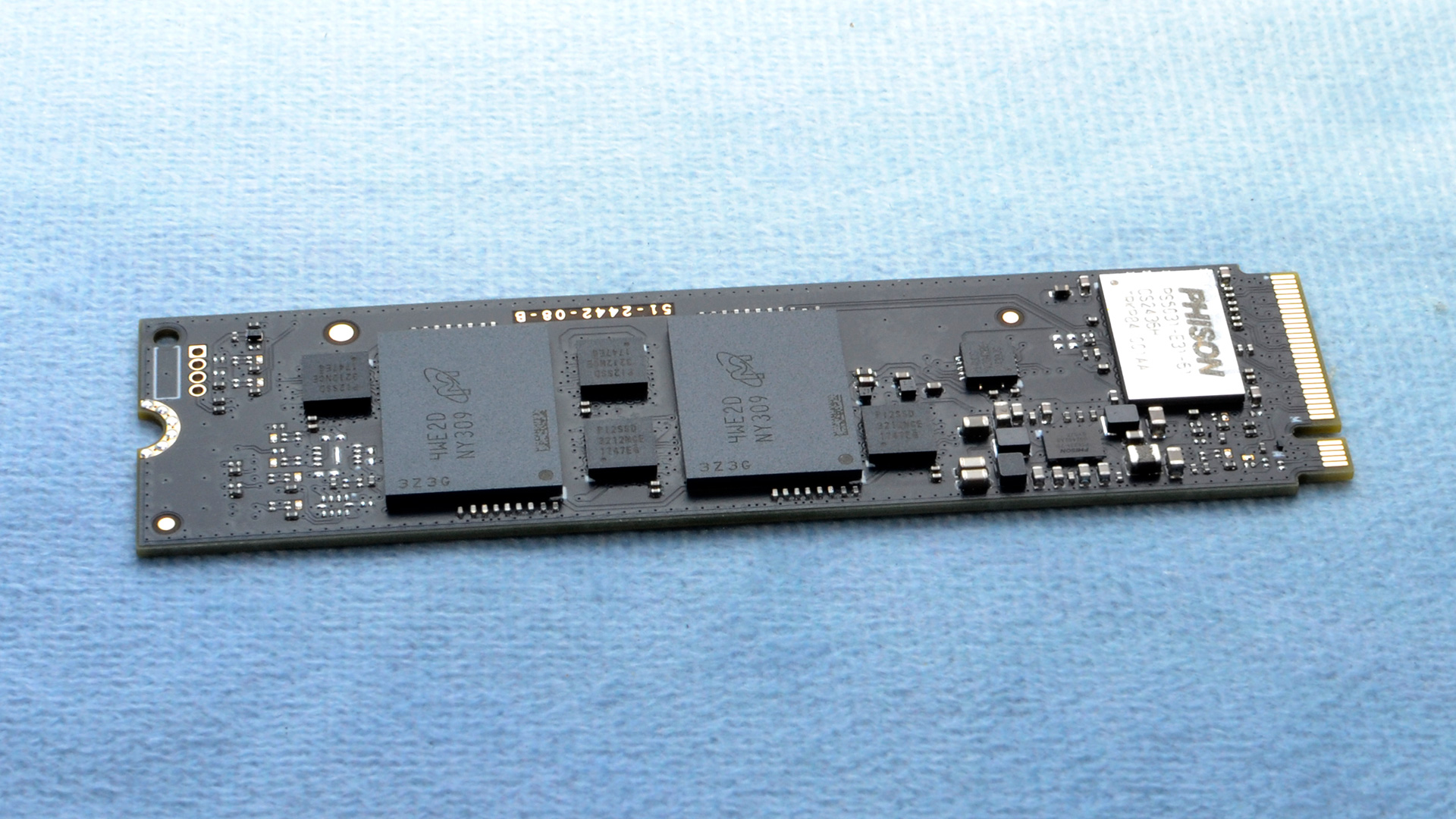
There are some other components on the PCB that are of interest beyond the critical ones listed above. These read as PI2SSD3212, with two per NAND flash package. These are high-speed switches for mux and demux, which we will simplify and say would be used to handle high-speed and/or high-capacity memory. We’ve seen something similar on drives in the past, such as Crucial’s 4TB T500, which had to handle a lot of fast memory with a four-channel controller. The same ICs from the T500 appear on higher-capacity external SSDs with Phison’s hybrid controllers, with the 2TB Sabrent Nano V2 being a prominent example. Improvements to switching and signal integrity can be useful in these cases, and we can think of some reasons Crucial would do this with a Phison controller, but we do not want to speculate too heavily.
The switches are technically obsolete as they are designed for DDR3 at 1866 Mbps. However, it also supports DDR4 at speeds exceeding what this flash can do with a cap of 5 Gbps. Micron’s 276-Layer flash can support speeds of up to 3,600 MT/s on paper, although the actual speed can vary, so this should be sufficient. Flash is not DRAM, but it operates on the same double data rate (DDR) principles – through ONFI NV-DDR, where NV stands for non-volatile, or Toggle DDR – so this works. Avoiding any deep analysis, we will say that trading board space for functionality could be a reasonable trade-off, considering Crucial is only using two NAND flash packages. Similarly, we’ve seen the tradeoff between utilizing a PMIC – Phison provides its own – and having a discrete power management solution. Different problems, but the cost-benefit ratio exists for both.
That’s not the case with the Nano V2, which has little space with which to work from the get-go, so we can assume it needed help in achieving maximum bus speeds and capacity with a two-channel controller. That may also be a factor for the four-channel P510, and the use of different ICs could be chalked up to having more board space, but that didn’t stop the double-sided 4TB T500. As such we might expect that it comes down to design philosophy, as stacking NAND flash packages high can be challenging, with things like frequency-boosting chips used for higher die counts. Again, we don’t want to speculate too much, but when looking at the drive, it is hard to miss the distinctive contours. While we do not have a 1TB model for this review, these ICs should not be necessary at 1TB, so the drive will look different at that capacity.
MORE: Best SSDs
MORE: Best External SSDs
MORE: Best SSD for the Steam Deck

Shane Downing is a Freelance Reviewer for Tom’s Hardware US, covering consumer storage hardware.